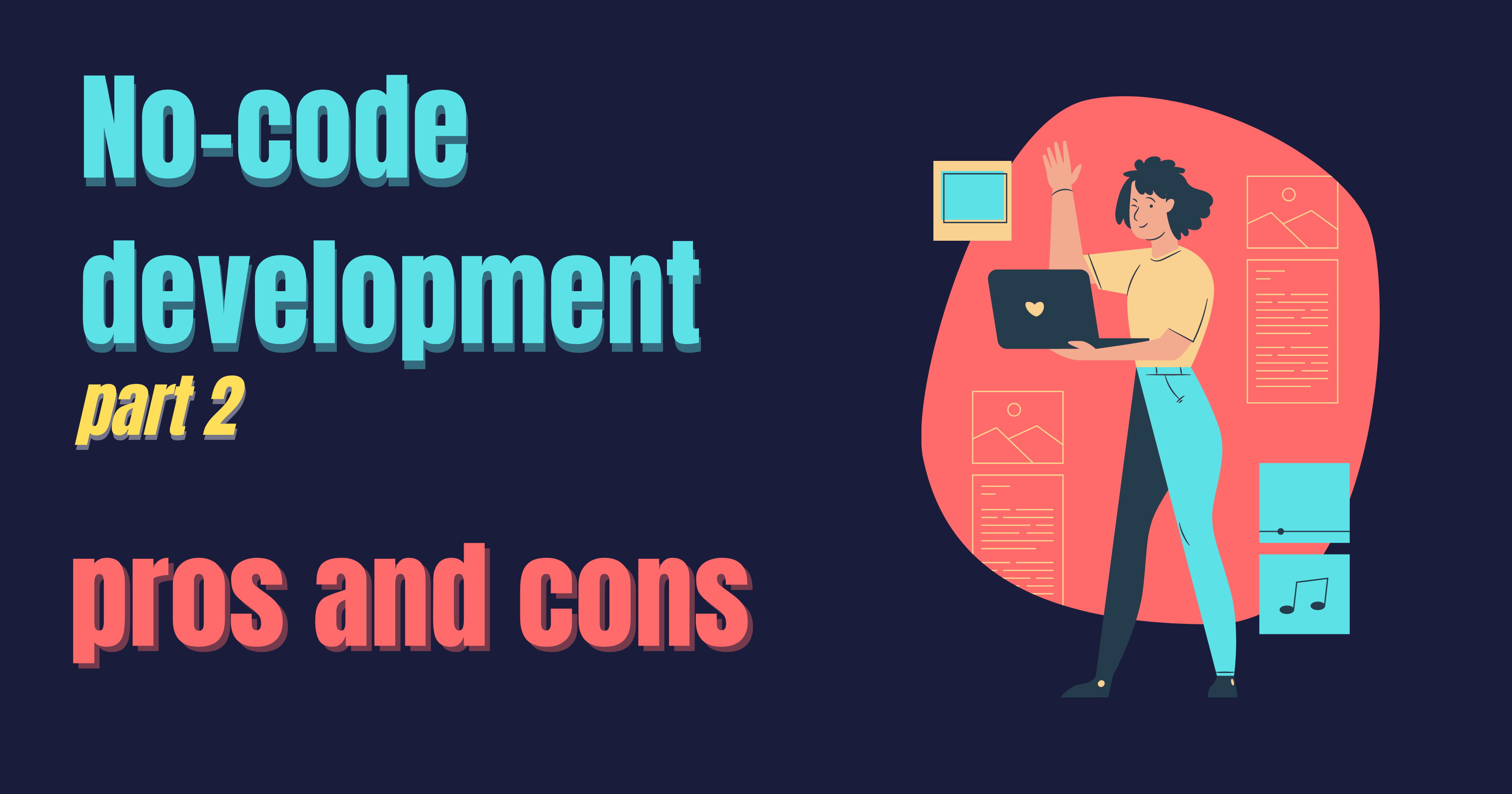In our last blog-post, we review what are the no-code platforms. No-code development tools for websites aren’t anything new. Millions of people use platforms like WordPress to launch a website without writing a line of code.
However, like everything out there in the world, the no-code platforms have their pros and cons. So, let’s review them.
Pros
- More agility
When you’re building an app without code, you’re never starting from scratch. Most of the development process is done through drag-and-drop by using already built modules. This means that building an app is a lot faster. Even the testing is automated, which further cuts down the total development time.
- Reduced cost
Usually, hiring a development team to build an app for you is expensive. Also, app builders keep all of their software up-to-date to keep getting new customers, so you have to pay for additional developer hours when your software needs updating. Using no-code platforms tends to be the most affordable way to build and maintain software. The total time and effort are significantly lower compared to traditional coding. And since you can build apps fast, the overall cost is reduced because you get more done with less.
- Easily changeable
The problem with traditional coding is that it becomes difficult to change something, especially if the code is in a language which is foreign to you. With no-code platforms, you can do everything you want. If you need to change something, you implement new logic and can have your change ready in just a few hours. This gives you more control over your content, and you won’t have to wait for a developer to fix things for you.
- No bad surprises
One of the most common complaints from clients who have worked with freelancers or small development teams is this: “I thought we agreed to A, but then they delivered B.” Unfortunately, the app development world is not always as transparent as we’d like. But with no-code tools, you can do whatever you want and just the way you want it.
Cons
- You must have a clear understanding of your requirements
Every user must first determine whether their requirements fit within the constraints of a particular no-code platform. Even if they do, there’s still a great chance these requirements to change over time, and so there’s always a risk when you choose a no-code developmental tool.
- Rigid templates limits you
When it comes to building different features of an application, no-code development platforms provide various templates and components. However, there is a limitation in customising apps. You may find yourself in a situation, in which you can’t implement that specific piece of business logic required. In other words, to meet the capabilities of the no-code platform, you will have to change your business processes.
- Security concerns
Unlike custom development, control over your application is something that you have to sacrifice when you choose the no-code development. Thus, this can lead to some risks. What happens if the company providing your no-code platform is acquired or even hacked? These eventual possibilities make your app vulnerable.
- You don’t own your source code
If you decide to move away from the chosen no-code development platform, you have to know that you don’t own the code of your app. This comes with an inability to switch providers or substantial costs to do so. Also, one of the highest values in a tech company is the intellectual property, which is greatly reduced when your app is built with a no-code solution,
- Restricted developer access
If you have developers on your team, they may want access to the code of the no-code built app. However, many of the no-code development tools block this access or limit it. If you have a development team, you should involve them in the process of selecting and deciding which platform you’re going to use.
- Feature limitations
When you create an app with a no-code platform, you have to use what’s already built. So, sometimes your access to features or integrations will be very limiting. With some no-code development tools, however, there are options to pay an additional fee to build these custom functionalities.
In conclusion, building apps without code isn’t for everyone. No-code platforms aren’t always a suitable alternative to low code or custom software development, at least for now. However, we can’t deny that they’re still pretty great.
No code development platforms are best suited to businesses that require simple, out-of-the-box solutions with minimal customisation. Often this applies to internal systems rather than customer-oriented software. Moreover, no-code development is ideal to create MVP (minimum viable product).


